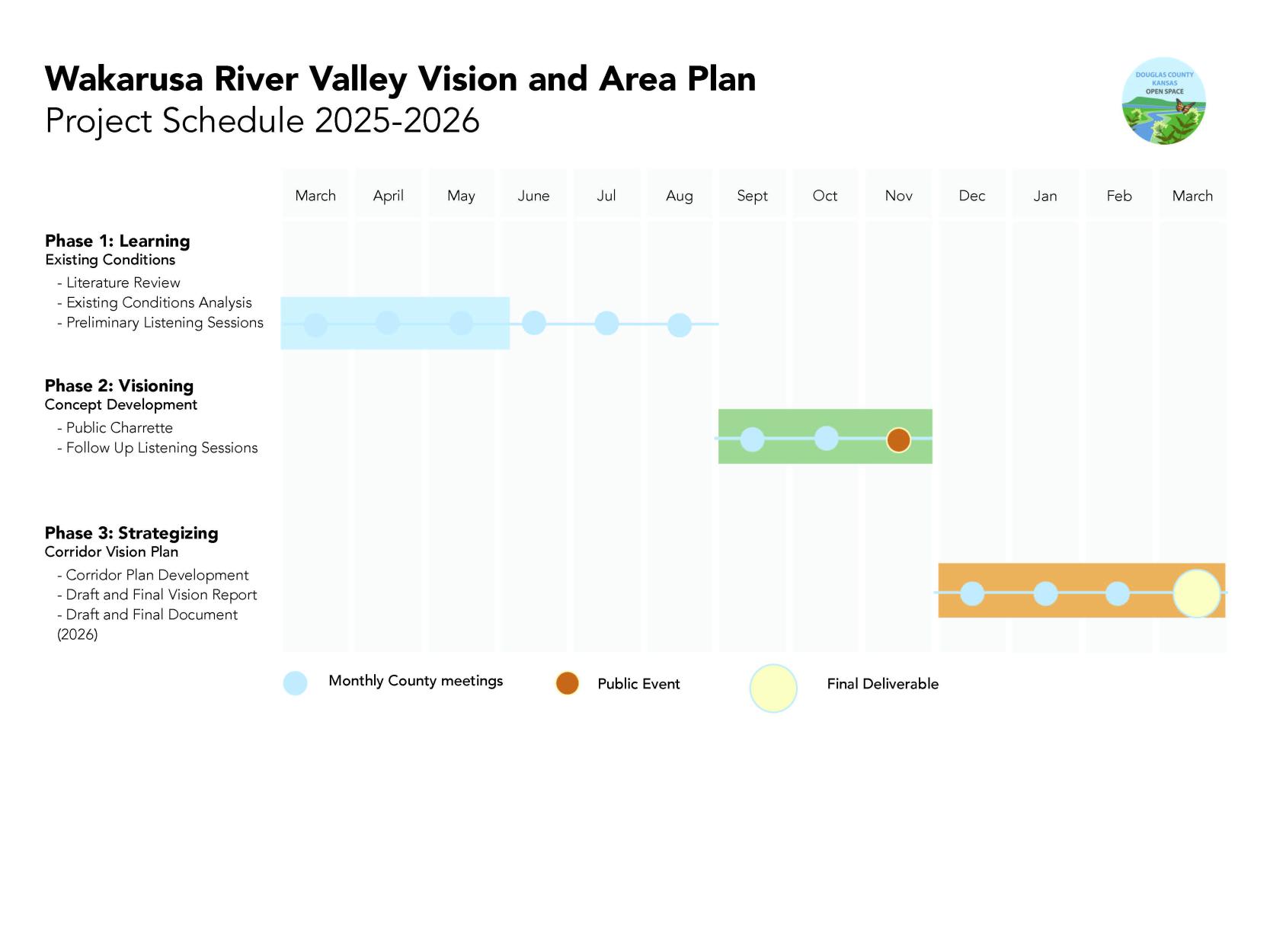Wakarusa River Valley Vision and Area Plan
This process is the first implementation step toward the Open Space Plan priority
to proactively plan for Conservation of the Wakarusa River Corridor.
The developing Wakarusa Vision Plan (for short) is a collaboration between local governments, institutional partners, and the planning firm Biohabitats. It will serve as an actionable, guiding framework for balancing the diversity of conservation values within the river corridor and the needs of our growing community.
Phase 1: Learning
From March – August, Biohabitats conducted comprehensive and layered analysis of a broad variety of data unique to the project area, from ecology and cultural heritage to infrastructure and land uses.
The learning phase also involved reviewing local and state plans and gathering insights from residents and experts connected to the Wakarusa River Valley, including Haskell students and faculty, environmental justice advocates, tourism and economic development perspectives, and conservation organizations. An invitation to complete an online survey was also mailed to property owners within the immediate project area.
The results of Phase 1 learning are synthesized in the Existing Conditions Summary slide deck and will also appear in the forthcoming Charette workshop activities and scenarios.
Phase 2: Visioning
The planning team continues to synthesize the complex and sensitive context of the area into holistic and accessible scenarios for further analysis and community consideration during workshops with specific stakeholders on Nov. 18 and Nov. 19.
Residents from across the county are invited to an Open House on Nov. 20 to review and give input on the future scenarios developed during the stakeholder workshops.
Who is the project team involved with this Plan?
Douglas County is leading this effort with Biohabitats, Alta Design, and Hoxie Collective. A local guiding team is made up of representatives of Douglas County, City of Lawrence, City of Eudora, and Haskell Indian Nations University.


